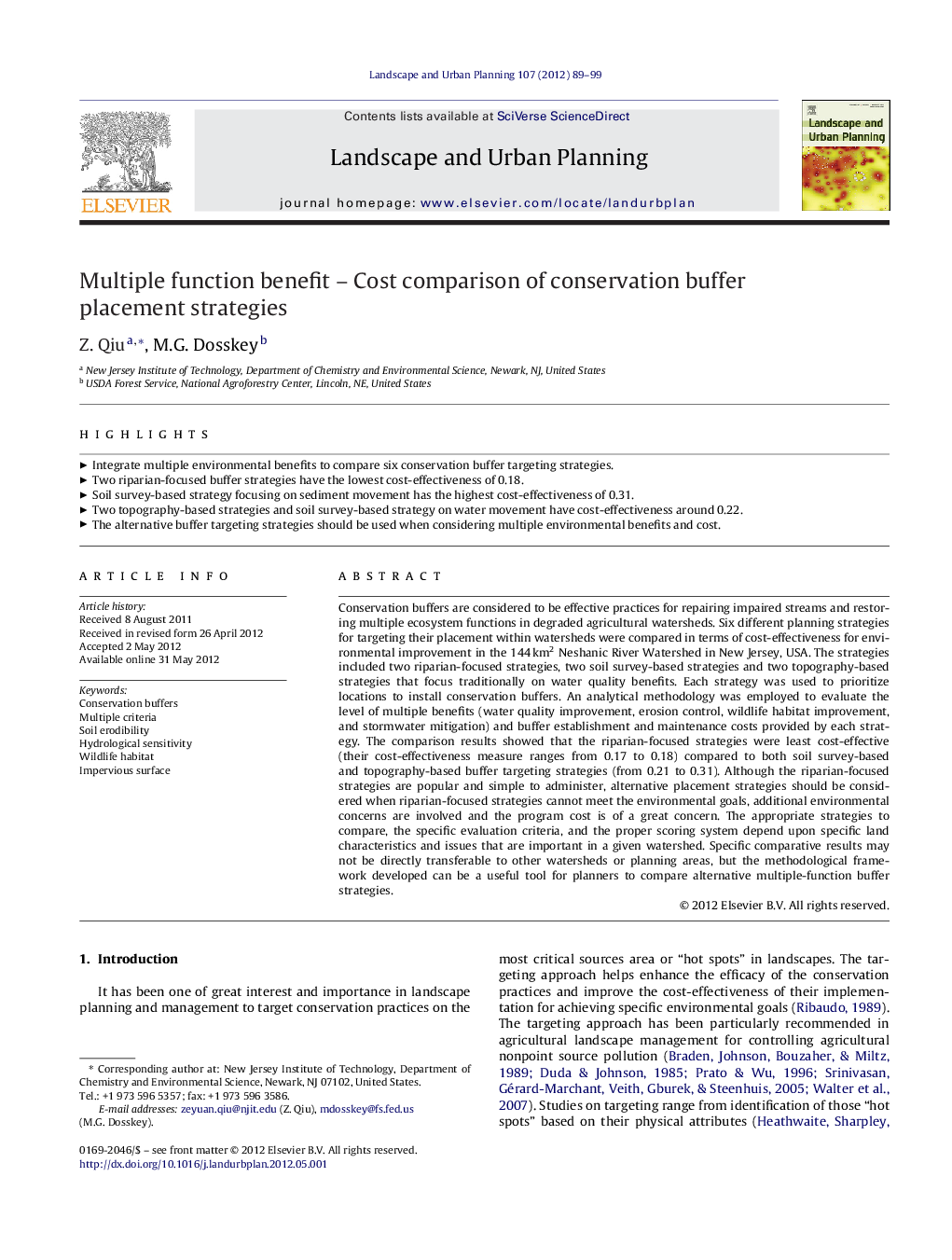| Article ID | Journal | Published Year | Pages | File Type |
|---|---|---|---|---|
| 1049438 | Landscape and Urban Planning | 2012 | 11 Pages |
Conservation buffers are considered to be effective practices for repairing impaired streams and restoring multiple ecosystem functions in degraded agricultural watersheds. Six different planning strategies for targeting their placement within watersheds were compared in terms of cost-effectiveness for environmental improvement in the 144 km2 Neshanic River Watershed in New Jersey, USA. The strategies included two riparian-focused strategies, two soil survey-based strategies and two topography-based strategies that focus traditionally on water quality benefits. Each strategy was used to prioritize locations to install conservation buffers. An analytical methodology was employed to evaluate the level of multiple benefits (water quality improvement, erosion control, wildlife habitat improvement, and stormwater mitigation) and buffer establishment and maintenance costs provided by each strategy. The comparison results showed that the riparian-focused strategies were least cost-effective (their cost-effectiveness measure ranges from 0.17 to 0.18) compared to both soil survey-based and topography-based buffer targeting strategies (from 0.21 to 0.31). Although the riparian-focused strategies are popular and simple to administer, alternative placement strategies should be considered when riparian-focused strategies cannot meet the environmental goals, additional environmental concerns are involved and the program cost is of a great concern. The appropriate strategies to compare, the specific evaluation criteria, and the proper scoring system depend upon specific land characteristics and issues that are important in a given watershed. Specific comparative results may not be directly transferable to other watersheds or planning areas, but the methodological framework developed can be a useful tool for planners to compare alternative multiple-function buffer strategies.
► Integrate multiple environmental benefits to compare six conservation buffer targeting strategies. ► Two riparian-focused buffer strategies have the lowest cost-effectiveness of 0.18. ► Soil survey-based strategy focusing on sediment movement has the highest cost-effectiveness of 0.31. ► Two topography-based strategies and soil survey-based strategy on water movement have cost-effectiveness around 0.22. ► The alternative buffer targeting strategies should be used when considering multiple environmental benefits and cost.
